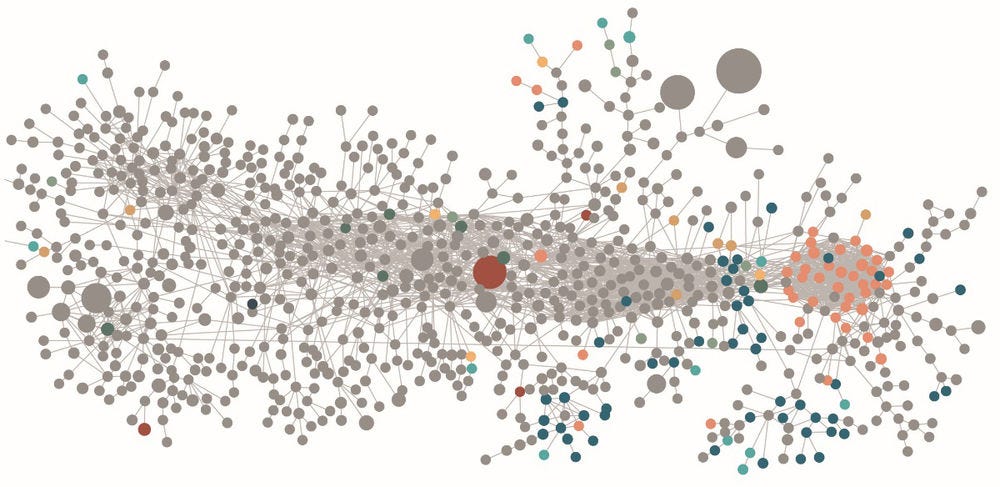[48] Abdon, A. and J. Felipe (2011), “The Product Space: What Does It Say About the Opportunities for Growth and Structural Transformation of Sub-Saharan Africa?”, Levy Institute Working Paper Series Working Paper 670.
[62] Adams, S. (2009), “Follow the Money: Engineering at Stanford and UC Berkeley During the Rise of Silicon Valley”, Minerva, Vol. 47/4, pp. 367-390, https://doi.org/10.1007/s11024-009-9138-y.
[14] Adusei-Asante, K. (2012), “The state of Ghana’s local government system: The case of Assembly Members”, Inkanyiso: Journal of Humanities and Social Sciences, Vol. 4/2, pp. 101-110.
[16] Ahrend, R. et al. (2014), “What Makes Cities More Productive? Evidence on the Role of Urban Governance from Five OECD Countries”, OECD Regional Development Working Papers, No. 2014/5, OECD Publishing, Paris, https://dx.doi.org/10.1787/5jz432cf2d8p-en.
[20] Ahrend, R., C. Gamper and A. Schumann (2014), “The OECD Metropolitan Governance Survey: A Quantitative Description of Governance Structures in large Urban Agglomerations”, OECD Regional Development Working Papers, No. 2014/4, OECD Publishing, Paris, https://dx.doi.org/10.1787/5jz43zldh08p-en.
[42] Asheim, B., R. Boschma and P. Cooke (2011), “Constructing Regional Advantage: Platform Policies Based on Related Variety and Differentiated Knowledge Bases”, Regional Studies, Vol. 45/7, pp. 893-904, https://doi.org/10.1080/00343404.2010.543126.
[36] AUDA-NEPAD (2021), Strategic Priorities, https://nepad.org/strategic-priorities.
[58] Baaziz, A. (2019), “Towards a new paradigm of “coopetitiveness” in emerging countries: Case of the Algerian Entrepreneurial Ecosystems”, International Journal of Innovation, Vol. 7/1, pp. 67-86, https://doi.org/10.5585/iji.v7i1.354.
[54] Balland, P. et al. (2020), “Complex economic activities concentrate in large cities”, Nature Human Behaviour, Vol. 4/3, pp. 248-254, https://doi.org/10.1038/s41562-019-0803-3.
[51] Bam, W. and K. De Bruyne (2018), “Improving Industrial Policy Intervention: The Case of Steel in South Africa”, The Journal of Development Studies, Vol. 55/11, pp. 2 460-2 475, https://doi.org/10.1080/00220388.2018.1528354.
[55] Bandara, A. (2018), “Youth labor market expectations and job matching in sub-Saharan Africa: evidence from school-to-work transition surveys”, Applied Economics, Vol. 51/8, pp. 762-780, https://doi.org/10.1080/00036846.2018.1512742.
[8] Bodman, P. and A. Hodge (2010), “What Drives Fiscal Decentralisation? Further Assessing the Role of Income*”, Fiscal Studies, Vol. 13/3, pp. 373-404, https://doi.org/10.1111/j.1475-5890.2010.00119.x.
[37] Cadot, O., C. Carrère and V. Strauss-Kahn (2012), “TRADE DIVERSIFICATION, INCOME, AND GROWTH: WHAT DO WE KNOW?”, Journal of Economic Surveys, Vol. 27/4, pp. 790-812, https://doi.org/10.1111/j.1467-6419.2011.00719.x.
[9] Crawford, G. and C. Hartmann (eds.) (2008), Introduction: Decentralisation as a Pathway out of Poverty and Conflict?, Amsterdam University Press, Amsterdam.
[40] David-West, O., I. Umukoro and R. Onuoha (2018), “Platforms in Sub-Saharan Africa: startup models and the role of business incubation”, Journal of Intellectual Capital, Vol. 19/3, pp. 581-616, https://doi.org/10.1108/jic-12-2016-0134.
[35] Department of Tourism (2010), The South African Tourism Planning Toolkit for Local Government, https://tkp.tourism.gov.za/Documents/Tourism%20Planning%20Toolkit%20for%20Local%20Government.pdf.
[30] Duranton, G. and A. Venables (2018), Place-Based Policies for Development, National Bureau of Economic Research, Cambridge, Massachusetts, https://doi.org/10.3386/w24562.
[52] El-Haddad, A. (2020), “Picking Winners: Identifying Leading Sectors for Egypt and Tunisia Using the Product Space Methodology”, Review of Middle East Economics and Finance, Vol. 16/1, https://doi.org/10.1515/rmeef-2019-0015.
[59] Etzkowitz, H. and L. Leydesdorff (1995), “The Triple Helix - University-industry-government relations: A laboratory for knowledge based economic development”, EASST Review, Vol. 14/1, pp. 14-19.
[33] Farole, T. (2011), Special Economic Zones in Africa: Comparing Performance and Learning from Global Experience, World Bank, https://openknowledge.worldbank.org/handle/10986/2268.
[26] French China (2013), Togo : un schéma directeur pour faire du Grand-Lomé un pôle d’ attraction en 2030, webpage, http://french.china.org.cn/foreign/txt/2013-12/03/content_30776701.htm.
[13] Ghana Local Governance Act (2016), Act 936.
[53] Goldstein, P. (2020), Pathways for Productive Diversification in Ethiopia.
[21] Haas, A. and S. Wani (2019), “IGC”, in Urban governance institutions. Policy options for fast-growing cities., International Growth Centre.
[46] Harvard Growth Lab (2021), Atlas of Economic Complexity, https://atlas.cid.harvard.edu/.
[50] Hausmann, R. et al. (2014), “How should Uganda grow?”, ESID Working Paper 30.
[29] Hausmann, R. and D. Rodrik (2003), “Economic development as self-discovery”, Journal of Development Economics, Vol. 72/2, pp. 603-633, https://doi.org/10.1016/s0304-3878(03)00124-x.
[39] Hidalgo, C. (2021), “Economic complexity theory and applications”, Nature Reviews Physics, Vol. 3/2, pp. 92-113, https://doi.org/10.1038/s42254-020-00275-1.
[47] Hidalgo, C. (2011), Discovering Southern and East Africa’s Industrial Opportunities, The German Marshall Fund of the United States.
[44] Hidalgo, C. and R. Hausmann (2009), “The building blocks of economic complexity”, Proceedings of the National Academy of Sciences, Vol. 106/26, pp. 10570-10575, https://doi.org/10.1073/pnas.0900943106.
[43] Hidalgo, C. et al. (2007), “The Product Space Conditions the Development of Nations”, Science, Vol. 317/5837, pp. 482-487, https://doi.org/10.1126/science.1144581.
[25] Jeune Afrique (2016), Togo : le ministre de l’Urbanisme veut améliorer les conditions de vie des habitants de Lomé, webpage, https://www.jeuneafrique.com/mag/363545/politique/togo-ministre-de-lurbanisme-veut-ameliorer-conditions-de-vie-habitants-de-lome/.
[38] Kemeny, T. and M. Storper (2014), “Is Specialization Good for Regional Economic Development?”, Regional Studies, Vol. 49/6, pp. 1003-1018, https://doi.org/10.1080/00343404.2014.899691.
[63] Kline, P. and E. Moretti (2013), “Local Economic Development, Agglomeration Economies, and the Big Push: 100 Years of Evidence from the Tennessee Valley Authority *”, The Quarterly Journal of Economics, Vol. 129/1, pp. 275-331, https://doi.org/10.1093/qje/qjt034.
[23] Ministère de l’Administration Territoriale, D. (ed.) (2019), “Communes du Grand Lomé”, Cartographie des communes qui constituent le Grand Lomé, https://www.pseau.org/outils/biblio/resume.php?d=8701 (accessed on 2021).
[6] Mo Ibrahim Foundation (2018), Public Service in Africa.
[18] Moreno-Monroy, A., M. Schiavina and P. Veneri (2020), “Metropolitan areas in the world. Delineation and population trends”, Journal of Urban Economics, Vol. 125/C, pp. 103 - 242, https://doi.org/10.1016/j.jue.2020.103242.
[3] OECD (2019), “Making decentralisation work: A handbook for policy-makers”, in Making Decentralisation Work: A Handbook for Policy-Makers, OECD Publishing, Paris, https://dx.doi.org/10.1787/dd49116c-en.
[15] OECD (2015), Governing the City, OECD Publishing, Paris, https://dx.doi.org/10.1787/9789264226500-en.
[22] OECD (2015), The Metropolitan Century: Understanding Urbanisation and its Consequences, OECD Publishing, Paris, https://dx.doi.org/10.1787/9789264228733-en.
[17] OECD (2012), Redefining “Urban”: A New Way to Measure Metropolitan Areas, OECD Publishing, Paris, https://dx.doi.org/10.1787/9789264174108-en.
[12] OECD/UCLG (2019), OECD DataStat, https://stats-1.oecd.org/WBOS/index.aspx (accessed on 18 November 2021).
[5] OECD/UCLG (2019), Report of the World Observatory on Subnational Government Finance and Investment – Key Findings.
[4] OECD/United Nations Human Settlements Programme (2018), Global State of National Urban Policy, OECD, https://doi.org/10.1787/9789264290747-en.
[28] Ogwang, J. (2018), Local Economic Development Project Evaluation. Final Report.
[19] Pieterse, E. (2017), “Urban governance and spatial transformation ambitions in Johannesburg”, Journal of Urban Affairs, Vol. 41/1, pp. 20-38, https://doi.org/10.1080/07352166.2017.1305807.
[24] République Togolaise (2019), “Loi No. 2019-018 du 15/11/19 portant attributions et fonctionnement du district autonome du Grand Lomé”, Journal Officiel, Vol. 64/30 bis, pp. 2-17.
[34] Ricardo, D. (2015), On the Principles of Political Economy, and Taxation, Cambridge University Press, https://doi.org/10.1017/cbo9781107589421.
[10] Riedl, R. and T. Dickovick (2010), Comparative assessment of decentralization in Africa: Final report and summary of findings.
[11] Rodríguez-Pose, A. and S. Tijmstra (2007), “Local Economic Development in Sub-Saharan Africa”, Environment and Planning C: Government and Policy, Vol. 25/4, pp. 516-536, https://doi.org/10.1068/c5p.
[64] Saad, M., S. Datta and A. Razak (2017), “University–industry relationships in developing countries: Opportunities and challenges in Algeria, Indonesia, Malaysia and India”, International Journal of Technology Management & Sustainable Development, Vol. 16/2, pp. 175-190, https://doi.org/10.1386/tmsd.16.2.175_1.
[57] Saad, M. et al. (2010), Mapping the diverse roles of universities in supporting innovation: Opportunities and challenges for Algeria, Indonesia, Malaysia and India, http://triplehelixconference.org/th/8/doc/PROCEEDINGS/0092_Saad_Mohammed_O-099/SaadMahdiAbdrazakDatta_THVIIIMadrid_FinalDraftSubmittedPaper_V10.pdf.
[60] Saad, M. and G. Zawdie (eds.) (2011), Theory and Practice of the Triple Helix Model in Developing Countries, Routledge, https://doi.org/10.4324/9780203838211.
[56] Saad, M., G. Zawdie and C. Malairaja (2008), “The triple helix strategy for universities in developing countries: the experiences in Malaysia and Algeria”, Science and Public Policy, Vol. 35/6, pp. 431-443, https://doi.org/10.3152/030234208x323316.
[61] Saxenian, A. (1978), “The Genesis of Silicon Valley”, Built Environment, Vol. 9/1, pp. 7-17.
[41] Tibaingana, A. (2019), “Anecdotal Evidence of the Role of Incubation in the Growth of Business Start-Ups in Uganda”, International Business Research, Vol. 13/1, p. 64, https://doi.org/10.5539/ibr.v13n1p64.
[2] UCLG Africa (2018), State of Local Development Implementation in Africa, United Cities and Local Governments Africa, https://knowledge.uclga.org/IMG/pdf/state_of_local_economic_development_implementation_in_africa_en_.pdf.
[7] UCLG Africa/Cities Alliance (2018), Assessing the Institutional Environment of Local Governments in Africa, Third Edition.
[49] Ulimwengu, J. and T. Badibanga (2012), “The sophistication and diversification of the African agricultural sector: A Product Space approach”, IFPRI Discussion Paper 1156.
[31] UNCTAD (2019), World Development Report: Special Economic Zones, United Nations Conference on Trade and Development, https://unctad.org/system/files/official-document/wir2019_en.pdf.
[45] UNCTAD (2015), “Operationalizing the Product Space: A Road Map to Export Diversification”, United Nations Conference on Trade and Development Discussion Papers, Vol. 219.
[27] UN-Habitat, EcoPlan International (2005), Promoting Local Economic Development Strategic Planning —Volume 1: Quick Guide, UN-Habitat.
[1] UN-Habitat, EcoPlan International (2005), Promoting Local Economic Development Through Strategic Planning: Volume 3 - Toolkit.
[32] Wang, J. (2013), “The economic impact of Special Economic Zones: Evidence from Chinese municipalities”, Journal of Development Economics, Vol. 101, pp. 133-147, https://doi.org/10.1016/j.jdeveco.2012.10.009.






